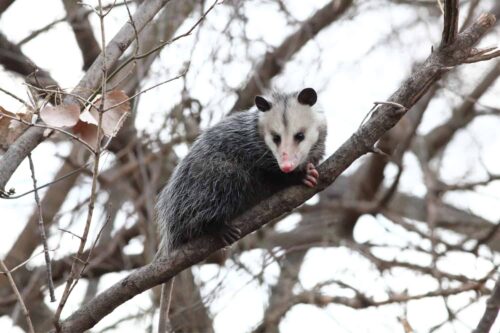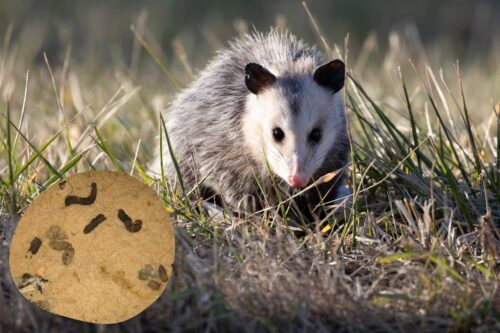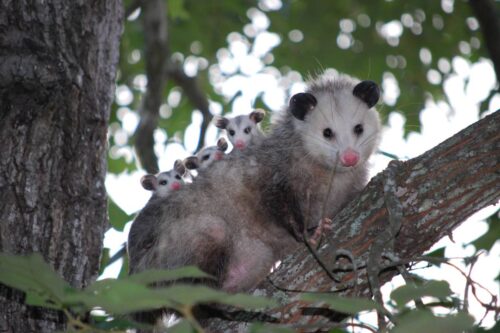How Big Do Opossums Get: Opossum Sizes Unveiled
Opossums are small to medium-sized marsupials. Opossums can be smaller or larger depending on their age and species. There are over 100 species of opossums, and their size can vary among different species. Newborn opossums, called joeys, are tiny and underdeveloped, about the size of a lima bean, and they reside in their mother’s pouch until they are more developed. Some are much smaller than the Virginia opossum, while others can be larger.
Overall, opossums are not particularly large animals compared to many other mammals. The largest known opossum has not exceeded the weight of 15 pounds. On average, the opossum can be as big as your domestic house cat. According to National Geographic, the size of the opossum is the same as the size of small puppy dogs. In this article, we are going to explore the opossum size in detail by dissecting the size of all their body parts. By reading this article, you will be quite clear about the actual size of this animal.

Contents
General features of opossum
Opossum comes with a variety of unique features. Let’s have a look at some of the most prominent and well-known features.
- Opossums are marsupials native to the Americas.
- There are over 100 species of opossums, but the Virginia opossum is the most well-known and widely distributed species in North America.
- Opossums are primarily nocturnal, which means they are most active during the night.
- Many opossum species have a prehensile tail, which means they can use it to grasp objects and even hang from tree branches.
- Opossums have a pointed face with a pink, rat-like snout.
- Opossums have 50 sharp teeth, which is more than any other North American mammal.
- Opossums are opportunistic feeders and have a varied diet.
- Opossums are generally solitary creatures.
- They are not territorial and often have a nomadic lifestyle.
- Opossums are not fast runners.
- Opossums have a relatively short lifespan.
- Opossums, known for their adaptability, can be found in a variety of habitats, providing valuable insights into where they reside.
How big do opossums get?
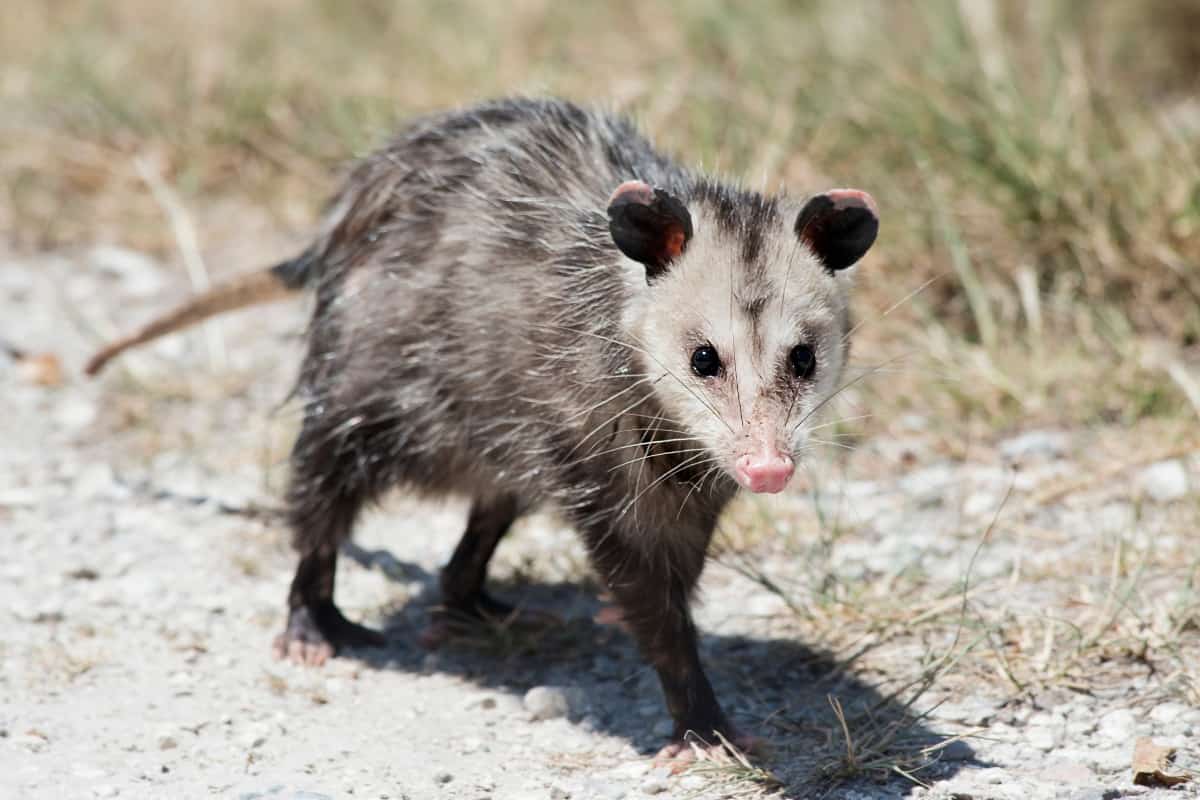
It is a very cliché question to be asked how big are opossums or how big can opossums get? The size of opossums can vary depending on the species and individual factors such as age and health. However, we can provide you with approximate size ranges for the most common opossum species, specifically the Virginia opossum which is the opossum species found in North America:
Virginia opossums typically have a body length ranging from about 10 to 15 inches. Their tail is usually between 8 to 12 inches long. Adult Virginia opossums generally weigh between 4 to 12 pounds. These size ranges are for adult opossums.
Young opossums, called joeys, are much smaller and less developed when they first leave their mother’s pouch. Over time, they grow to reach the adult size mentioned above. It’s important to note that opossums are generally smaller than many other common mammals, such as raccoons or house cats.
Opossum size chart as compared to other animals
Let’s compare the size of the opossum with closely related animals like the Virginia opossum, squirrel, house cat, raccoon, etc. The size of opossums varies depending on the species, but we can provide a general comparison of the size of opossums.
| Animals | Body length | Tail length | Weight |
| Opossum | 10 to 15 inches | 8 to 12 inches | 4 to 12 pounds |
| Virginia opossum | 10 to 15 inches | 8 to 12 inches | 4 to 12 pounds |
| House cat | 18 to 20 inches | 11 to 12 inches | 5 to 20 pounds |
| Racoon | 16 to 28 inches | 8 to 16 inches | 8 to 20 pounds |
| Gray squirrel | 9 to 11 inches | 7 to 10 inches | 0.5 to 1.5 pounds |
If we look at this chart, then we can assume that the opossum size is not very different than small animals like house cats, gray squirrels, squirrels, etc. All of them lie in almost the same size category.
When Do Opossums Reach Adulthood?
Opossums reach adulthood at different ages depending on different species and some external factors. Opossums are born in a relatively undeveloped state and are extremely tiny when they emerge from their mother’s pouch. They typically spend the first few months of their lives nursing and being carried in the mother’s pouch.
By around 70 to 100 days after birth, young opossums begin to wean from their mother’s milk and start eating solid food. During this time, they are considered juveniles. As they continue to grow, opossums enter the adolescent stage, which can last several months. During this time, they become more independent, explore their environment, and learn to find food on their own.
Opossums are generally considered to reach adulthood at around one year of age. At this point, they have developed the physical characteristics and behaviors typical of adult opossums. They are sexually mature and capable of reproducing.
Baby opossum size

Newborn opossums are about the size of a bumblebee or a honeybee, measuring only around 1 centimeter or 0.4 inches in length. They are extremely underdeveloped, and their eyes, ears, and limbs are not fully developed. After birth, baby opossums crawl into their mother’s pouch, where they attach themselves to one of her teats.
In the pouch, they continue to develop and grow. At this stage, they are still very small, but they are getting nourishment from their mother’s milk and growing rapidly.
Male vs. female opossum size
In most opossum species, including the Virginia opossum, there is generally little difference in size between males and females. Both male and female opossums of the same species typically have similar body lengths, tail lengths, and weights within the species-specific size range.
Best Conditions for the Growth of Opossum
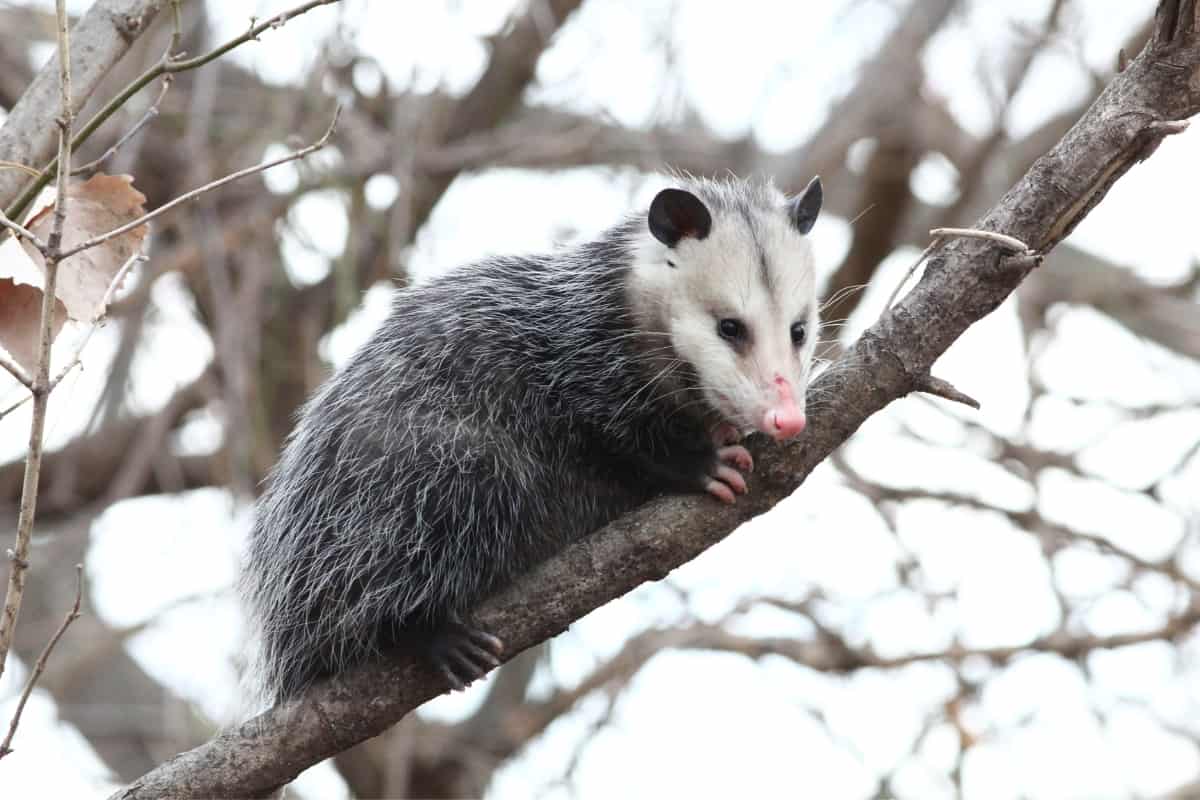
Opossums are highly adaptable creatures, and they can thrive in a variety of environments and conditions. However, certain conditions are more favorable for opossums to grow and thrive. Here are some of the best conditions for opossums:
Diverse Sources of food
Opossums are opportunistic feeders with a varied diet. The best conditions for them include access to diverse food sources, including insects, small mammals, fruits, vegetables, and carrion. Having a variety of food options allows them to meet their dietary needs more easily.
Nesting Sites
Opossums require shelter and nesting sites for safety and reproduction. This can include hollow trees, brush piles, abandoned burrows, or even human-made structures like attics or sheds.
Easy Access to Water
Like all animals, opossums need access to water for drinking and maintaining their health. A nearby water source, such as a stream, pond, or even puddles, is beneficial for their survival.
Protection from Predators
Opossums are not fast runners and rely on other strategies for defense, such as hissing, showing their teeth, or “playing dead.” Having safe places to retreat to and escape from predators is important for their survival.
Moderate Temperatures
Opossums are generally adaptable to a range of climates, but they tend to prefer moderate temperatures. Extreme cold or heat can be challenging for them, so regions with milder climates are often more suitable.
Diverse Habitat
Opossums thrive in areas with diverse habitats. Wooded areas, grasslands, wetlands, and urban environments with a mix of vegetation and open spaces can all provide suitable conditions for opossums.
Limited Competition
Opossums are solitary animals and typically avoid competition with other opossums for resources. Having access to food and shelter without too much competition from other opossums can be advantageous.
Minimized Exposure to Harmful Substances
Opossums, like many wildlife species, are susceptible to the harmful effects of pesticides, pollutants, and toxins. A habitat that is free from these hazards is ideal for their health.
Breeding Opportunities
Suitable conditions for opossums include opportunities for breeding and raising their young. This includes access to secure nesting sites for females to rear their pouch-bound young.
Feeding Habits of Opossums
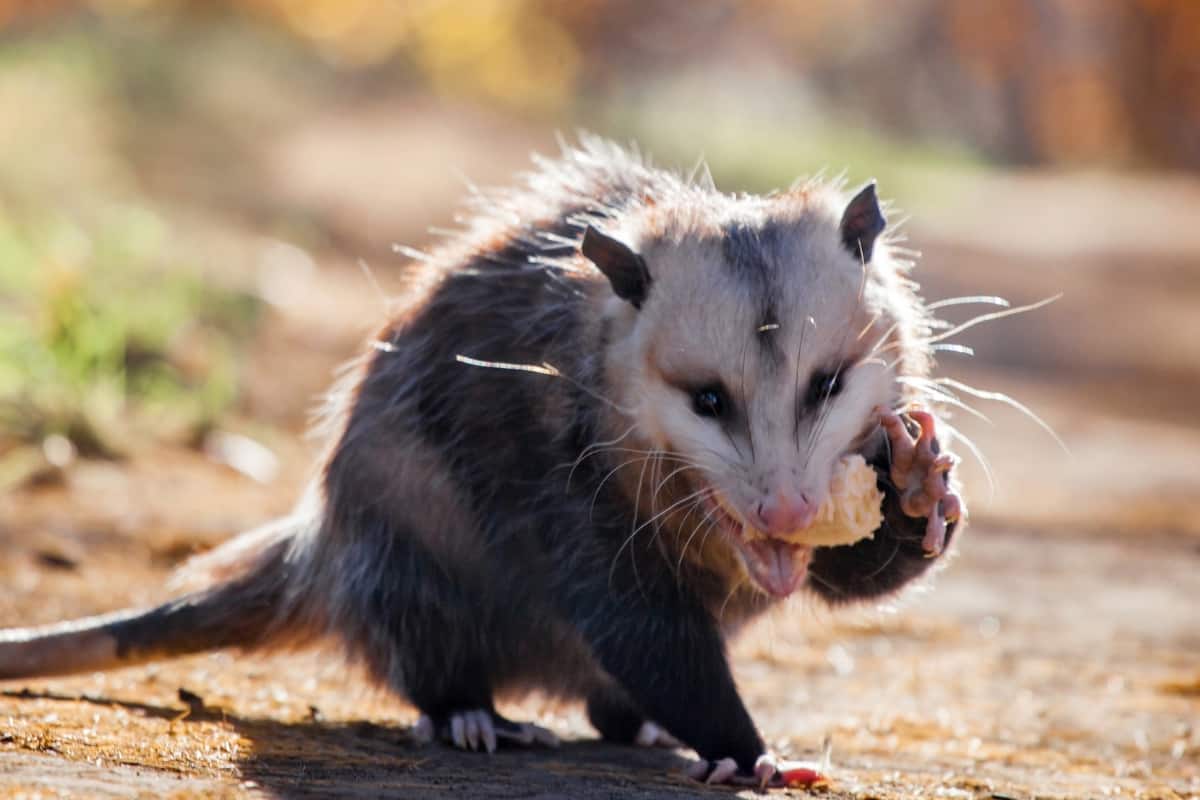
The diet of an animal plays a very important role in the overall growth of an animal and that’s why it is important to discuss the feeding habits of the opossums. Opossums are opportunistic feeders with a varied diet. They are known for their adaptability in finding food, and their feeding habits can vary depending on their environment and the availability of food resources.
Opossums are omnivores, which means they eat both plant and animal matter. Their diet can include a wide range of items such as Opossums consume a variety of insects, including beetles, grasshoppers, and ticks. They are also known to eat snails, slugs, and other small invertebrates. They may prey on small mammals like mice, voles, and shrews. Opossums are opportunistic and may raid bird nests for eggs and even capture small birds.
Opossums are also fond of fruits such as berries, apples, and persimmons. They may also eat vegetables like corn and carrion. Opossums are scavengers and will readily consume carrion, including roadkill and other dead animals. In urban areas, opossums may rummage through garbage cans in search of discarded food.
Opossums are primarily nocturnal, which means they are most active during the night. This behavior helps them avoid many daytime predators and compete less with other animals for food.
Opossums are excellent scavengers. They use their keen sense of smell to locate food, and their ability to eat a wide variety of items allows them to take advantage of whatever is available. Opossums are generally solitary animals when it comes to feeding. They do not typically form groups to hunt or forage. However, a mother opossum may be accompanied by her young while teaching them to find food.
Largest size Discovered opossum
Opossums have to face very high Mortality rates throughout their life. The largest species of the opossum will be the only one which can survive for a longer period and this maximum period of survival could be 2 years. In this regard, the largest opossum species is the Virginia opossum which is native to North America. However, there are no verified records of Virginia opossums growing significantly larger than the average size.
Individual variations in size can occur due to factors like genetics, diet, and environmental conditions, but these variations are generally within the typical size range for the species. It’s important to note that while some opossum species in other parts of the world may be larger or smaller than the Virginia opossum, they are all generally within their respective species’ size range. There are no records of giant or unusually large opossums that significantly deviate from the typical size range for their species.
Conclusion
Opossums, despite their relatively small size, encompass a world of diversity. From the tiniest joeys to the adults, they show us that nature continually surprises us with its variations and adaptations. Opossum size plays a crucial role in their survival. Their diverse adaptations, whether it’s their pouch for nurturing young or their ability to forage for varied foods, have allowed them to thrive in a range of environments.
While opossums come in various sizes, it’s important to remember that their true value lies not just in their dimensions but in their ecological roles. They are a crucial part of the web of life, contributing to the balance of ecosystems in many ways.

Izzy is an experienced ranch worker who has a passion for exploring nature and getting up close to wildlife. With her connections to various animal organizations, Izzy is well-versed in animal care and rehabilitation.

